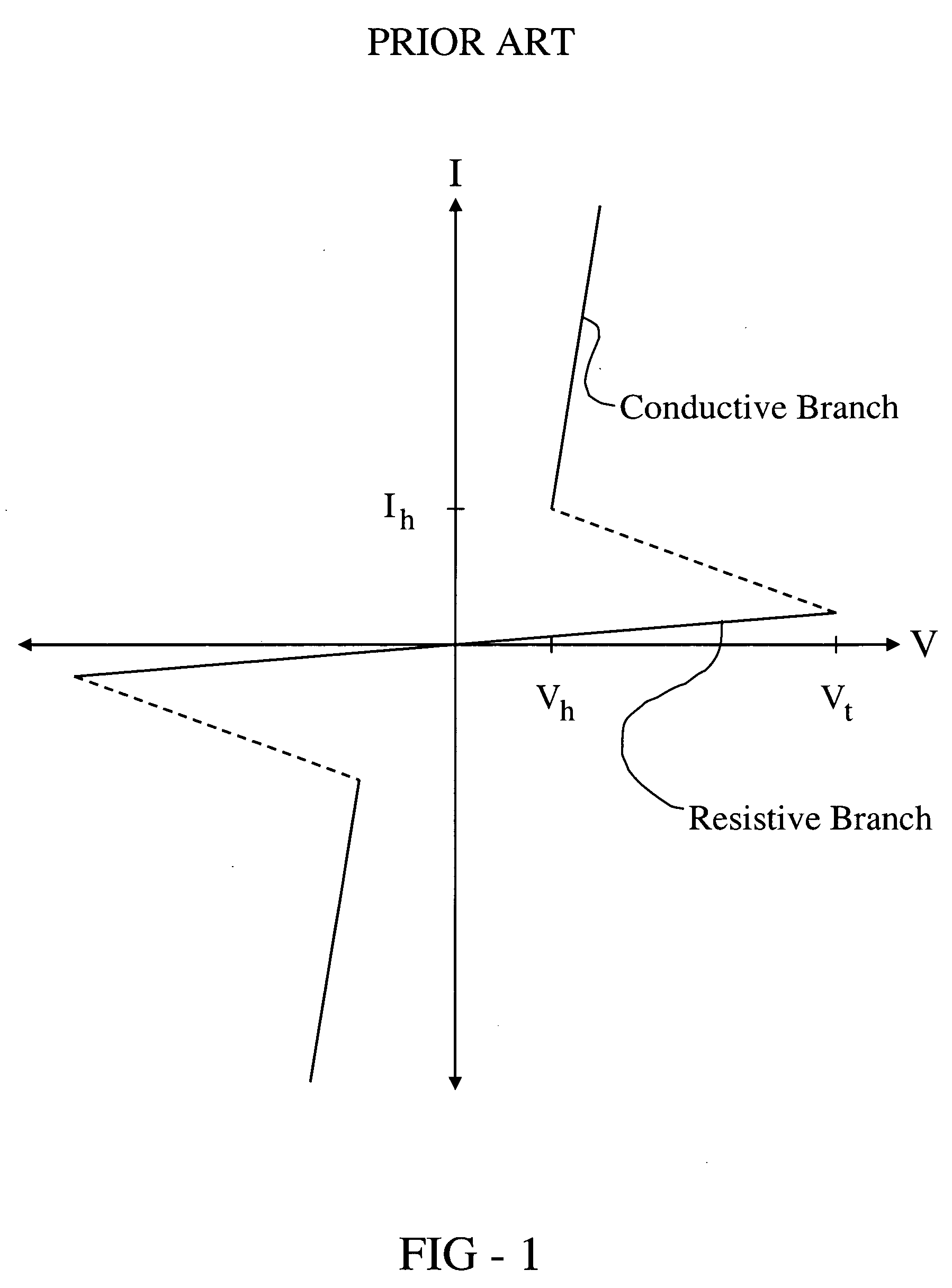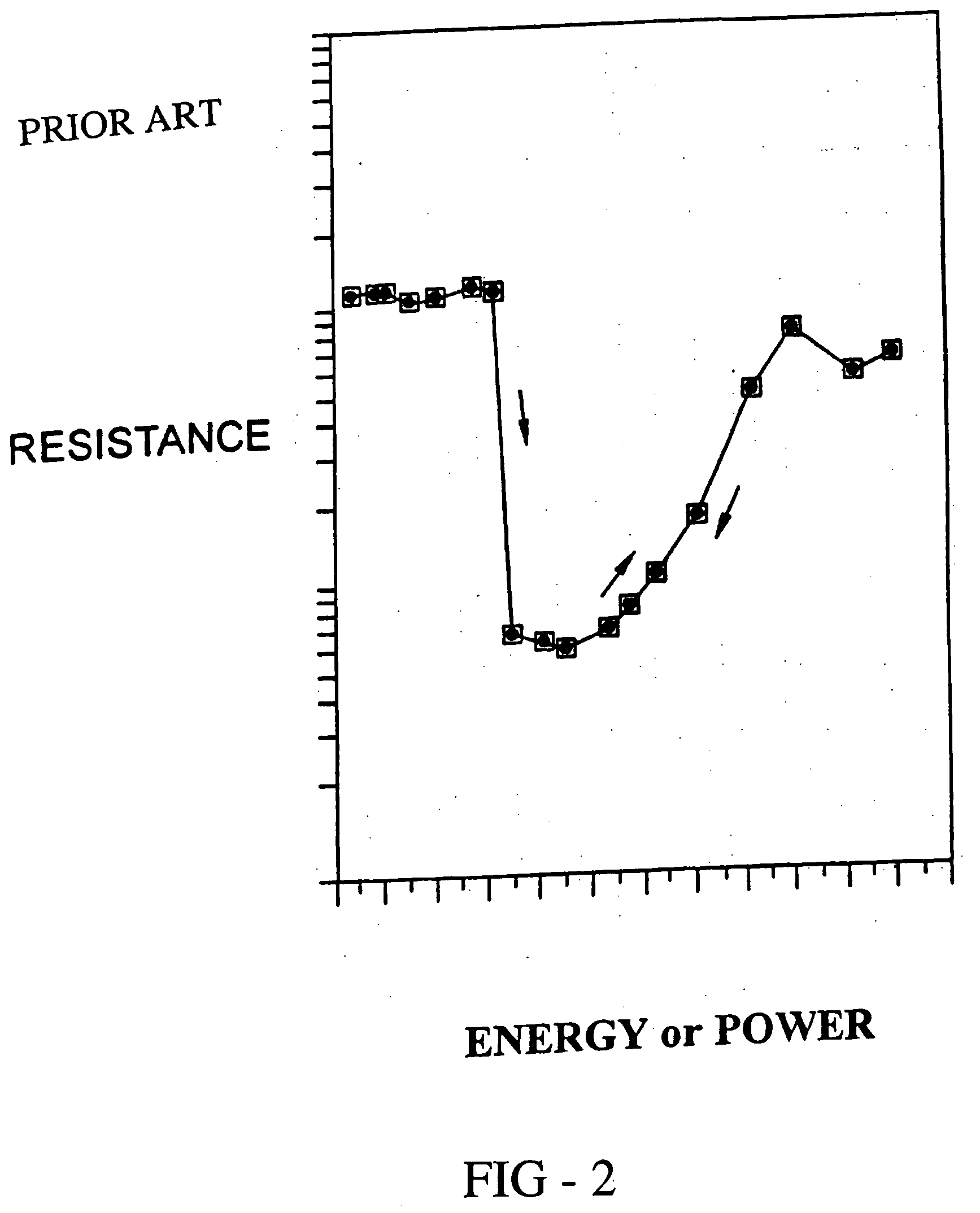Chemical vapor deposition of chalcogenide materials
a technology of chalcogenide and chemical vapor deposition, which is applied in the direction of chemical vapor deposition coating, liquid surface applicator, coating, etc., can solve the problem that the use of the ovonic family of optical and electrical chalcogenide materials is virtually non-existen
- Summary
- Abstract
- Description
- Claims
- Application Information
AI Technical Summary
Benefits of technology
Problems solved by technology
Method used
Image
Examples
example 1
[0057] In this example, the CVD synthesis of Sb2Te3 on a silicon nitride substrate is demonstrated. The CVD reactor includes a substrate mount, multiple precursor inlets for delivering precursors in vapor or gas phase form directly or diluted in a carrier gas as well as separate overhead showerhead and backfill lines for providing background pressure of an inert ambient gas.
[0058] A silicon nitride wafer substrate was placed in a CVD reaction chamber. Tris(dimethylamino)antimony (Sb(N(CH3)2)3)was used as the antimony (Sb) precursor to provide the Sb necessary for film formation. Diisopropyltellurium (Te(CH(CH3)2)2) was used as the tellurium (Te) precursor to provide the Te necessary for film formation. The molecular forms of the two precursors are shown in FIG. 3 herein. Both precursors are liquids at ambient condition and were delivered to the CVD reactor in a vapor phase form through use of a bubbler. The Sb-precursor and the Te-precursor were placed in separate bubblers connecte...
example 2
[0062] In this example, a two layer structure including solid phase layers of Sb2Te3 and Ge is prepared in a CVD process. The deposition was performed on a SiN substrate that was rotated at 50 rpm. The CVD reactor, the Sb-precursor and Te-precursor used in this example are as described in EXAMPLE 1 hereinabove. The Ge-precursor was isobutylgermane, H3Ge(i-C4H9), and has the molecular form shown in FIG. 6 herein. The Ge-precursor is a high vapor pressure liquid at ambient conditions and was delivered to the CVD reactor through a bubbler.
[0063] The deposition began with deposition of a Ge layer. The Ge-precursor was placed in a bubbler. 200 sccm of He was bubbled through the Ge-precursor to provide a gas stream containing the Ge-precursor in a vapor phase form in He as a carrier gas. This gas stream was further diluted with 300 sccm of He and then injected into the reactor. During deposition of the Ge layer, 400 sccm He was injected through the showerhead and 250 sccm He was injected...
example 3
[0073] In this example, a single layer three-element solid phase chalcogenide thin film is deposited by chemical vapor deposition. The deposition was performed on a SiN substrate that was rotated at 50 rpm. The CVD reactor, the Sb-precursor, Te-precursor and Ge-precursor used in this example are as described in EXAMPLE 1 and EXAMPLE 2 hereinabove.
[0074] The deposition in this example was accomplished through a reaction of the Sb-precursor, Te-precursor, and Ge-precursor, where all three precursors were present simultaneously in the CVD reactor. The precursors were introduced into the CVD reactor through separate feed lines. Helium (He) was used as a carrier gas for all three precursors. The Sb-precursor and Te-precursor were placed in separate bubblers heated to 75° C. and delivered to the CVD reactor through separate feed lines, also heated to 75° C. He was bubbled through the Sb-precursor bubbler at a flow rate of 200 sccm to produce a gas stream containing the Sb-precursor in a ...
PUM
| Property | Measurement | Unit |
|---|---|---|
| total pressure | aaaaa | aaaaa |
| temperature | aaaaa | aaaaa |
| pressure | aaaaa | aaaaa |
Abstract
Description
Claims
Application Information
 Login to View More
Login to View More - R&D
- Intellectual Property
- Life Sciences
- Materials
- Tech Scout
- Unparalleled Data Quality
- Higher Quality Content
- 60% Fewer Hallucinations
Browse by: Latest US Patents, China's latest patents, Technical Efficacy Thesaurus, Application Domain, Technology Topic, Popular Technical Reports.
© 2025 PatSnap. All rights reserved.Legal|Privacy policy|Modern Slavery Act Transparency Statement|Sitemap|About US| Contact US: help@patsnap.com



